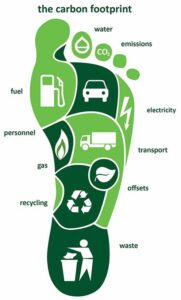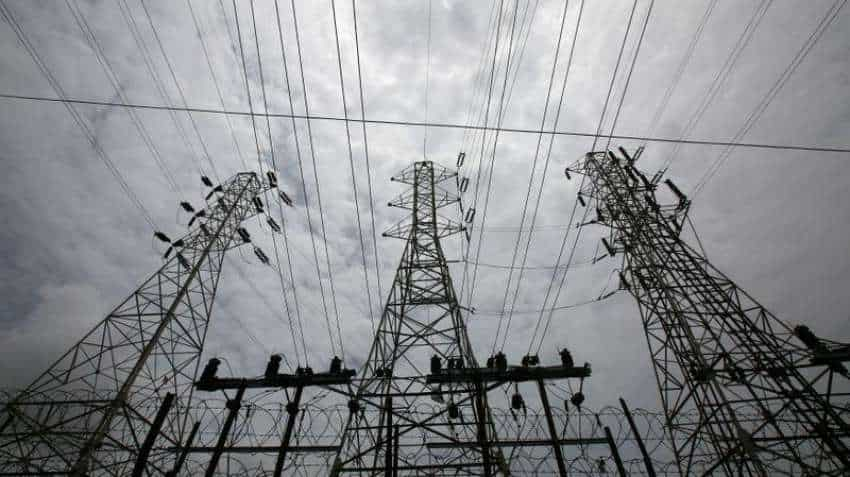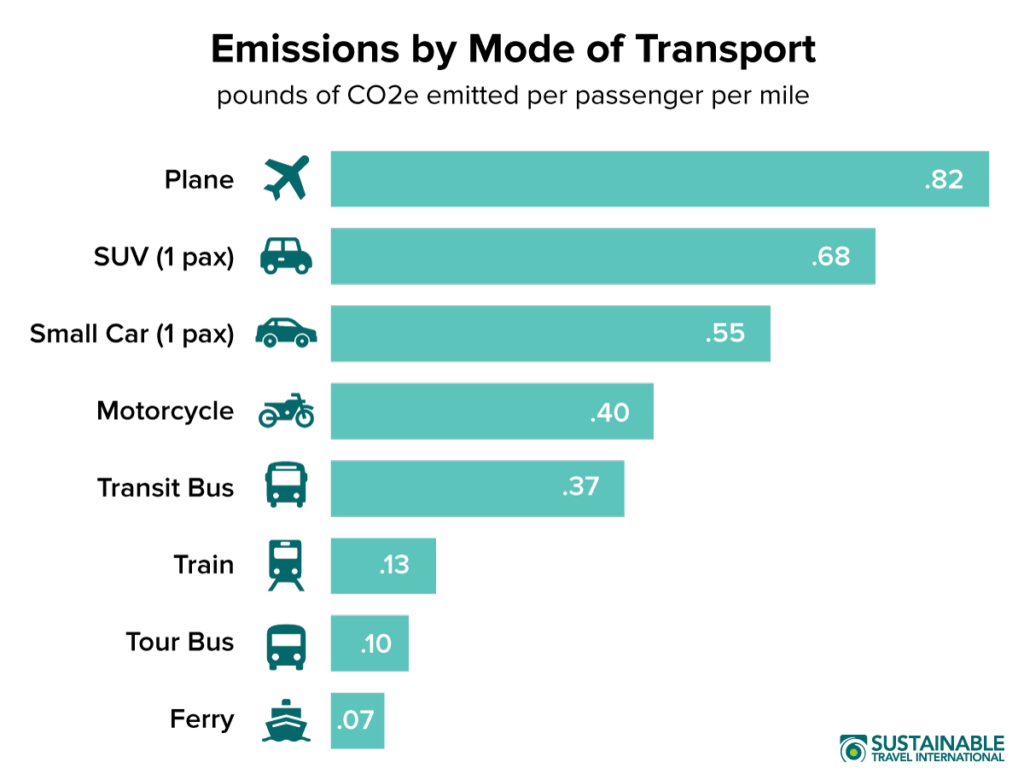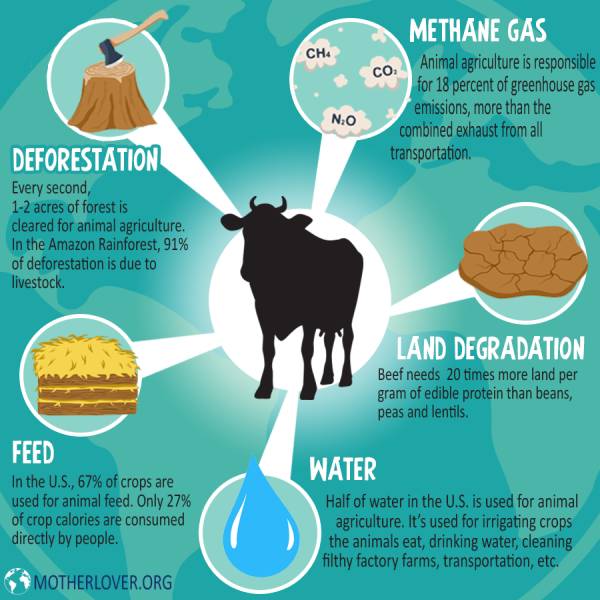Whether you have recently read a tweet about Taylor Swift’s private jet’s carbon footprints that has gathered much critical attention towards her, or you have been reading articles that vent about the concept as you sit clueless without having a solid knowledge base, this article will not only help you understand carbon footprint meaning, but also inform you about the global condition that has been a result of increased carbon footprints of humanity over the years through carbon footprint examples.
What is a Carbon Footprint?

One’s carbon footprint refers to the total amount of greenhouse gases (GHG) that are emitted by an individual, organization, product, or activity. These dangerous gases include carbon dioxide (CO2), methane (CH4), nitrous oxide (N2O), and fluorinated gases. These gases are feared to be trapping excessive heat in the earth’s ozone layer due to their chemical make-up. With excessive heating that only keeps accelerating due to human ignorance, these gases contribute to global warming which in turn leads to the climatic changes that different sensitive regions of the world have begun witnessing in the case of floods, droughts, melted ice caps, etc.
What exactly is responsible for creating carbon footprints?
Although there is a large myth surrounding carbon footprints that only large organisations and industries can have ‘carbon footprints’, the reality is that every single activity that emits greenhouse gases has individuals responsible for the activity taking place. All of these individuals are increasing their carbon footprint by engaging in such environmentally degrading activities.
There are various causes of carbon emissions taking place namely:
1. Energy Consumption

The burning of fossil fuels like coal, oil, and natural gas for electricity, heating, and transportation releases large amounts of CO2 into the atmosphere. According to the International Energy Agency (IEA), energy-related CO2 emissions reached a record high of 33.1 gigatons in 2019. The electricity sector was the largest source of emissions. However, in 2020, global energy-related CO2 emissions fell by 6.4%, or 2.3 gigatons, due to the COVID-19 pandemic and associated lockdowns, according to the International Energy Agency (IEA). The emissions quickly rebounded in the second half of the year as economies reopened, pointing towards the cultural carelessness around the carbon footprints of our lifestyles.
2. Transportation

Cars, trucks, and other vehicles that run on fossil fuels also contribute to emissions of CO2 and other greenhouse gases. According to the Environmental Protection Agency (EPA) in the United States, transportation accounted for 29% of greenhouse gas emissions in the country in 2019. Globally, the transportation sector accounted for approximately 14% of greenhouse gas emissions in 2016, according to the International Energy Agency (IEA).
Whether you would rather ride the public transport to work over a car, or even simply walk/cycle to nearby places, it would be wise to begin that decision as soon as possible. However, if you must absolutely drive by yourself, a fuel-efficient vehicle or an electric vehicle is an excellent option to ensure reduction in carbon emissions from transportation. Fuel-efficient vehicles, including hybrids and plug-in hybrids, can significantly reduce emissions compared to traditional gasoline vehicles as it also does not consume fuels. These vehicles use less fuel and emit fewer pollutants, making them a more environmentally friendly option.
3. Industrial processes
The production of goods and services in industries such as manufacturing, construction, and mining also generate greenhouse gas emissions. The United Nations Framework Convention on Climate Change (UNFCCC) estimates that industrial processes and product use accounted for approximately 7% of global greenhouse gas emissions in 2014. However, in 2018, this increased when the United Nations Framework Convention on Climate Change (UNFCCC) came out with a statistic about how industrial processes and product use account for approximately 6.5% of global greenhouse gas emissions.

Although the average citizen does not have access to changing industrial practices, they have control over the types of products and services one opts for. By practicing sustainability in your purchases, you will not just be reducing your private carbon footprint, but also contributing to customer trends of choosing sustainable companies that has the potential to change the sustainable landscape of the Indian market.
4. Agriculture and livestock

The raising of animals for food and the production of crops also contribute to greenhouse gas emissions, primarily through the use of fertilizers, energy for production, and the release of methane from livestock. The Food and Agriculture Organization (FAO) published a report in 2006 titled “Livestock’s Long Shadow: Environmental Issues and Options,” which estimated that the livestock sector was responsible for 18% of global greenhouse gas emissions.
Reducing food waste is indeed one of the most effective ways to lower the carbon footprint of agriculture and livestock. Food waste is a significant contributor to the carbon footprint of the food system, as it requires resources to produce, transport, and dispose of food that is never consumed. Absolutely! Choosing sustainably produced food and supporting companies with sustainable sourcing policies can make a significant difference in reducing the carbon footprint of agriculture and livestock production.
Many food companies are now recognizing the importance of sustainability and are implementing policies to reduce their environmental impact. These policies may include sourcing ingredients from local and organic farms, reducing food waste, and minimizing packaging waste. However, As consumers, we have the power to support these companies by choosing sustainably produced food and encouraging others to do the same. This can include purchasing food from farmers’ markets or stores that prioritize sustainable sourcing, reading labels to ensure products are sustainably sourced, and reducing meat consumption, as animal agriculture is a significant contributor to greenhouse gas emissions
5. Waste disposal

Landfills and other waste disposal sites release methane and other greenhouse gases as organic waste breaks down. According to the Intergovernmental Panel on Climate Change (IPCC), the waste sector accounted for approximately 5% of global greenhouse gas emissions in 2010, primarily from methane emissions from landfills and wastewater treatment plants. According to the Global Methane Initiative, landfills and wastewater treatment plants were responsible for approximately 1.7 gigatons of CO2 equivalent emissions globally in 2018, representing approximately 5% of global greenhouse gas emissions.
To reduce food waste, we can take several steps, including planning meals ahead of time, storing food properly, and buying only the necessary amount of food. Consumers can also donate excess food to food banks or compost it instead of sending it to landfills. One of the most effective ways to reduce your carbon footprint from waste disposal is to generate less waste in the first place. This can be done by reducing your consumption of single-use products, choosing products with less packaging, and repairing and reusing items instead of throwing them away. Using reusable bags, containers, and utensils instead of disposable ones can reduce the amount of waste that ends up in landfills as well.
Should I be calculating my carbon footprint too?
Calculating your carbon footprint is an essential exercise for environmentally conscious citizens. Understanding the impact of daily choices on the environment can help identify areas where changes can be made to reduce emissions and contribute to the fight against climate change. These changes not only benefit the environment but also bring cost savings and better health.
To calculate your carbon footprint, start by identifying sources of greenhouse gas emissions in your routine, such as electricity usage, transportation, food choices, and waste generation. Then collect data on energy consumption, fuel receipts, and food-related emissions. Animal agriculture contributes significantly to carbon emissions, with estimates suggesting it accounts for 14.5% of global greenhouse gas emissions. By making simple changes, such as reducing energy consumption and choosing eco-friendly transportation, we can all play a role in reducing our carbon footprint and promoting a healthier planet.
Where can I find a Carbon Footprint calculator?

In the digital age, online carbon calculators can provide accurate values to determine your impact on the planet. There are several free carbon footprint calculators available online that can assist you in estimating your emissions from transportation, household energy usage, and waste management. Some of these calculators include ‘Carbon Footprint‘, My Climate, and Carbon Independent.
These calculators not only help you compare your results to other countries but also offer strategies to reduce your carbon footprint. Additionally, some calculators like My Climate provide an opportunity to offset your emissions by supporting climate protection projects as well- ensuring that you don’t just reduce your carbon footprint, but help in improving upon the damage that your lifestyle has caused in the past.
Ways to reduce carbon footprint
Reducing our carbon footprint is essential in mitigating the effects of climate change. There are several ways we can reduce our carbon footprint, starting with reducing our energy consumption. This can be achieved by turning off lights and electronic devices when not in use, using energy-efficient appliances and light bulbs, and adjusting thermostats to conserve energy. Transportation is another significant contributor to our carbon footprint, so we can reduce our carbon footprint by using public transportation, carpooling, biking, or walking. Additionally, reducing meat consumption and choosing plant-based diets can also help reduce our carbon footprint. We can also reduce our carbon footprint by reducing waste, recycling, and choosing products made from sustainable materials.
Finally, we can consider offsetting our carbon footprint by supporting projects that aim to reduce greenhouse gas emissions or planting trees. If you are starting out on your sustainable lifestyle journey, you can start with these simple steps. By making these small changes in our daily lives, we can significantly reduce our carbon footprint and help preserve our planet for future generations.










